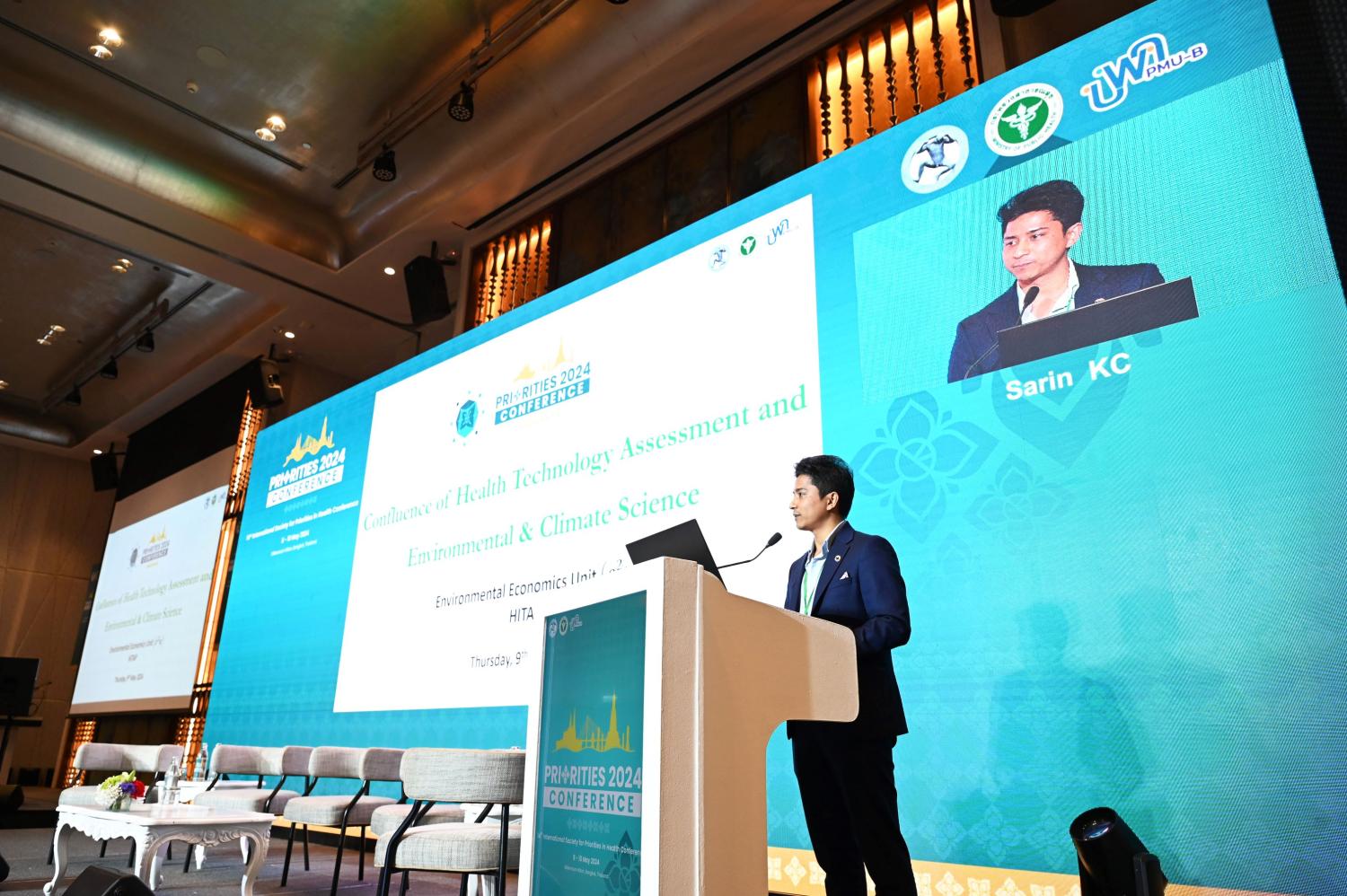Overcoming Barriers: Financing and Service Delivery for Vaccination in Fragile and Conflict-Affected States


The world is rapidly changing. In mid-2023, NASA found that the average temperature in the Northern Hemisphere was the highest in 170 years, with ice melting 6-7 times faster compared to 25 years ago.
Antonio Guterres, the Secretary-General of the United Nations (UN), announced that the era of global warming has ended, and the world is now entering an era of ‘Global Boiling.’ The Carbon Clock indicates that humanity has about five years to address this crisis to prevent the Earth’s temperature from rising above 1.5 degrees Celsius. Crossing this threshold would lead to irreversible climate tipping points, drastically changing the world to another that we have never known.
Human relationships with the environment have significantly altered, particularly in terms of health and healthcare systems, which have become more fragile due to environmental changes.
At the 26th Conference of the Parties (COP26) in Scotland in late 2021, countries, including Thailand, set two main goals: to build a healthcare system that adapts to carbon changes and to climate change. Recognizing the importance of environmental impacts on public health, the Ministry of Public Health initiated the Smart Energy Climate Action (SECA) policy to meet UN targets for reducing greenhouse gas emissions.
To achieve these goals, Thailand must design an environmentally conscious healthcare system at the policy level. Reliable evidence is crucial for policy decisions, which led the Health Intervention and Technology Assessment Program (HITAP) to establish a new unit called the Environmental Economic Unit (E2U).
Sarin KC, head of E2U, explains that climate change impacts health in terms of costs, medical expenses, and the economic loss from patients being unable to work, leading to broader economic and social losses. Conversely, healthcare activities also affect the environment, such as greenhouse gas emissions from drug production and transportation. E2U aims to propose appropriate solutions, reducing mortality and illness rates, as well as making the healthcare system more environmentally friendly using academic data to design and adapt to climate change impacts.
 Sarin KC spoke at the Priorities 2024 conference on “Greening Our Health: Prioritizing Environmental Sustainability,” emphasizing integrating sustainable environmental practices into healthcare to respond to climate change.
Sarin KC spoke at the Priorities 2024 conference on “Greening Our Health: Prioritizing Environmental Sustainability,” emphasizing integrating sustainable environmental practices into healthcare to respond to climate change.
E2U, under HITAP, acts as a bridge between climate change mitigation measures and the healthcare system, supporting the use of data and clear evidence to bridge the gaps by working with policymakers. E2U’s mission aligns with the goal of achieving the net zero greenhouse gas emissions by 2050 and the COP26 objectives, focusing on:
E2U will develop 1) adaptation policies to enable the healthcare system to cope with climate change and environmental degradation and 2) mitigation policies to reduce health impacts due to climate change by legal resolution suggestion.
Moreover, E2U’s framework aims to study the number of people affected by climate change health-wise and the budget required for operations. It will also assess whether the healthcare system affects climate change by studying the life cycle of medical products and technologies such as drug development, patience transfer, hospital activities, and medical services. They will integrate these aspects under the concept of Green Health Technology Assessment (Green HTA) which is a new approach for considering environmental impacts alongside medical technology in the healthcare system.
Sarin KC mentions a project to assess carbon emissions in Thailand’s healthcare system, starting with a pilot study in 10 hospitals of different levels to evaluate carbon emissions from various activities. Challenges include lack of data and carbon footprint evaluation limitations. Moreover, the sample size of hospitals is not representative of the national health sector’s carbon emissions. In addition, no clear guidelines are provided for evaluating carbon emissions in Thailand’s healthcare system.
Currently, E2U collaborates with the Ministry of Public Health (MOPH) under the SECA policy and international partners like Health Care Without Harm (HCWH) to establish a database of greenhouse gas emissions from 903 MOPH-affiliated hospitals. The goal is to record resource usage in each hospital activity, displaying overall carbon emissions (kg CO2eq) of Thailand’s healthcare system. This pilot project aims to expand nationwide, and E2U will also develop Green HTA guidelines.
E2U plans to study measures to reduce environmental impacts, such as telemedicine services to lower carbon emissions without compromising healthcare quality. The aim is also to set standards and guidelines for sustainable practices in Thailand’s healthcare system. HITAP collaborates with international experts, including HCWH and the WHO-led Alliance for Transformative Action for Climate and Health (ATACH), to create strategies to reduce the health sector’s environmental and climate impacts in Thailand.
Additionally, E2U plans to enhance healthcare personnel’s capacity to 1) assess and report emissions and 2) adapt clinical and healthcare practices to achieve mutual benefits such as reducing greenhouse gas emissions, cutting costs, and improving public health, leading to sustainable pollution management and effective policy decisions.
To read in Thai, visit: https://www.thecoverage.info/news/content/7074